Abstract
Gibberellin A1 (GA1), 3-epi-GA1, GA4, GA9, 11α-hydroxyGA12, 12α-hydroxyGA12, GA15, GA17, GA19, GA20, GA25, GA37, GA40, GA58, GA69, GA70, and GA71 have been identified from Kovats retention indices and full scan mass spectra by capillary GC-MS analyses of purified extracts from sporophytes of the tree fern, Cibotium glaucum. Abscisic acid, dihydrophaseic acid, an epimer of 4′-dihydrophaseic acid, and the epimeric ent-6α, 7α, 16α, 17-(OH)4 and ent-6α, 7α, 16β, 17-(OH)4 derivatives of ent16, 17-dihydrokaurenoic acid, in addition to the epimeric 16α, 17- and 16β, 17-dihydroxy-16, 17-dihydro derivatives of GA12, were also identified in extracts of C. glaucum. An oxodihydrophaseic acid and a hydroxydihydrophaseic acid were also detected. In extracts of sporophytes of Dicksonia antarctica, GA4, GA9, 12α- and 12β-hydroxyGA12, GA15, GA25, and GA37 were identified by the same criteria, as well as abscisic acid, phaseic acid, 8′-hydroxymethylabscisic acid and dihydrophaseic acid. This is the first time that GA40 has been identified in a higher plant; it is also the first report of the natural occurrence of the two gibberellins, 11α- and 12β-hydroxyGA12. The total gibberellin (GA) content in C. glaucum (tall) was at least one order of magnitude greater than that of D. antarctica (dwarf) based on total ion current response in GC-MS and bioassay data. Abscisic acid was a major component of D. antarctica and the oxodihydrophaseic acid was a major component of C. glaucum.
Full text
PDF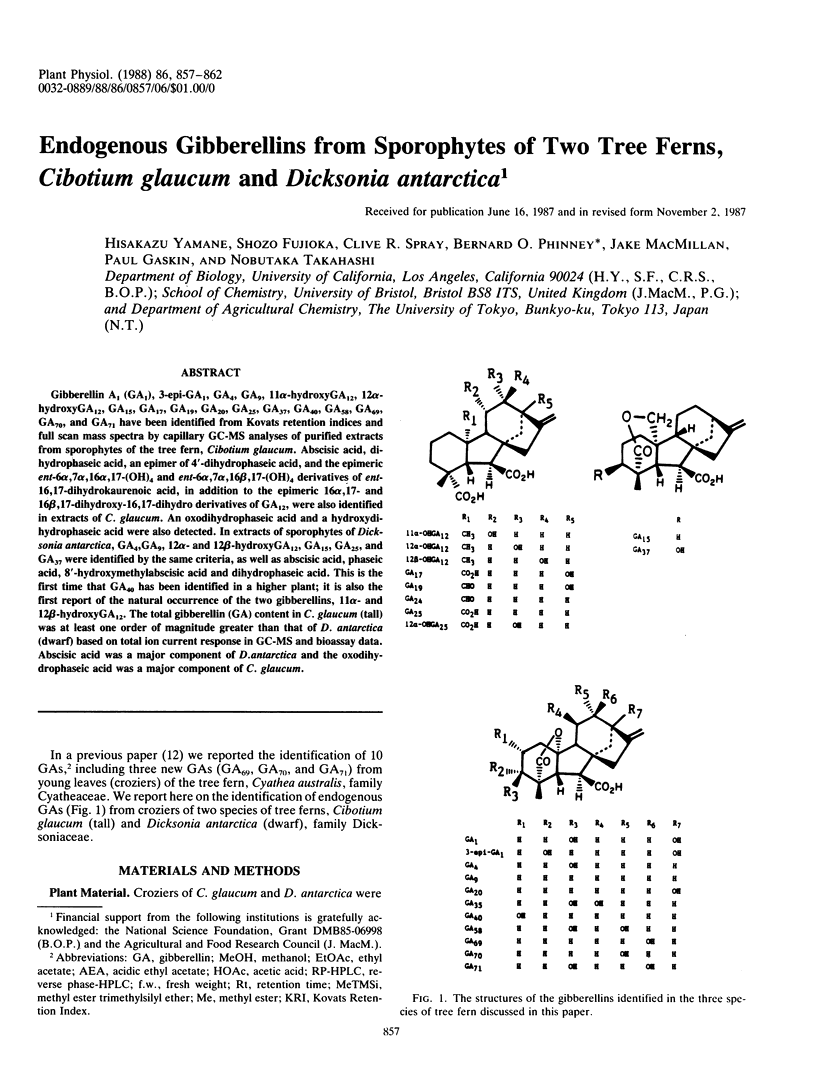
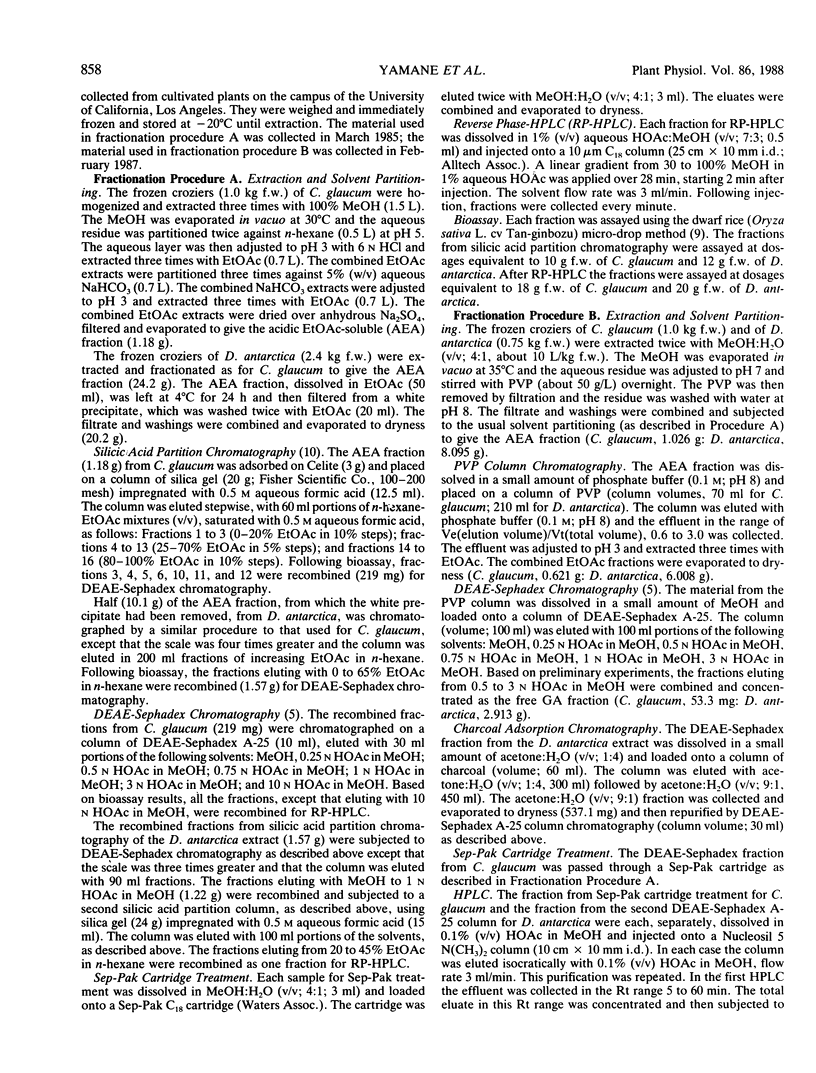
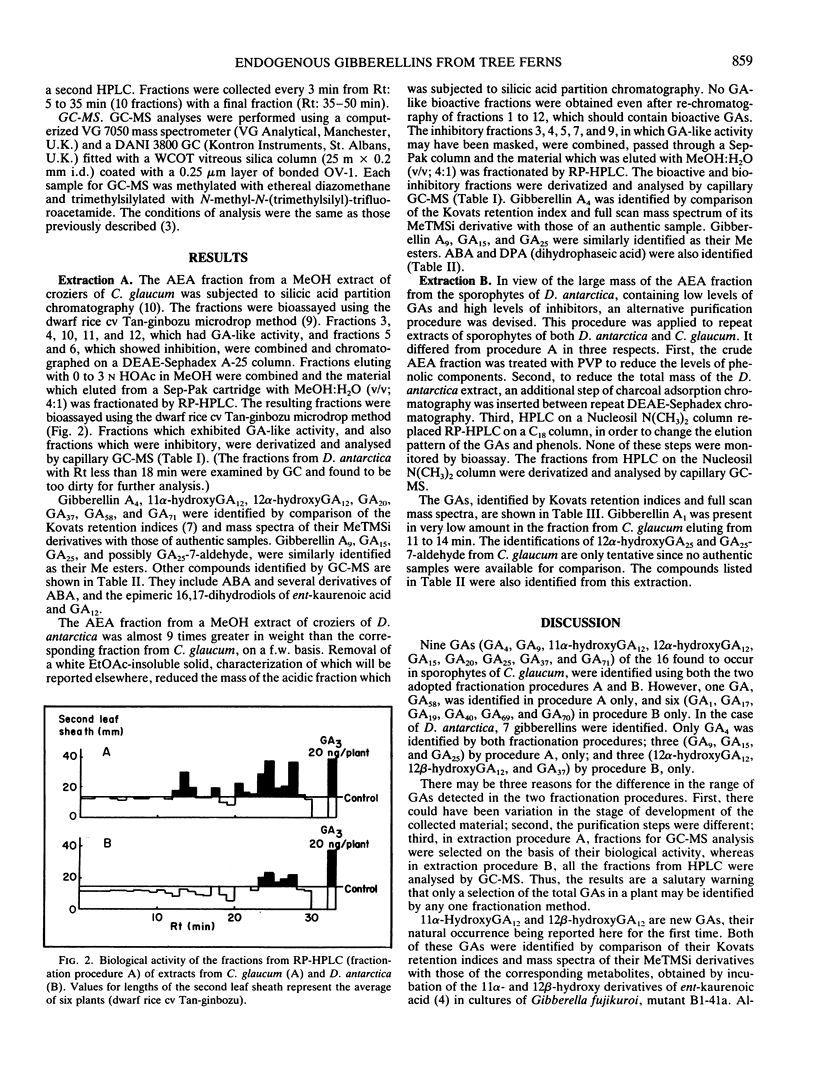
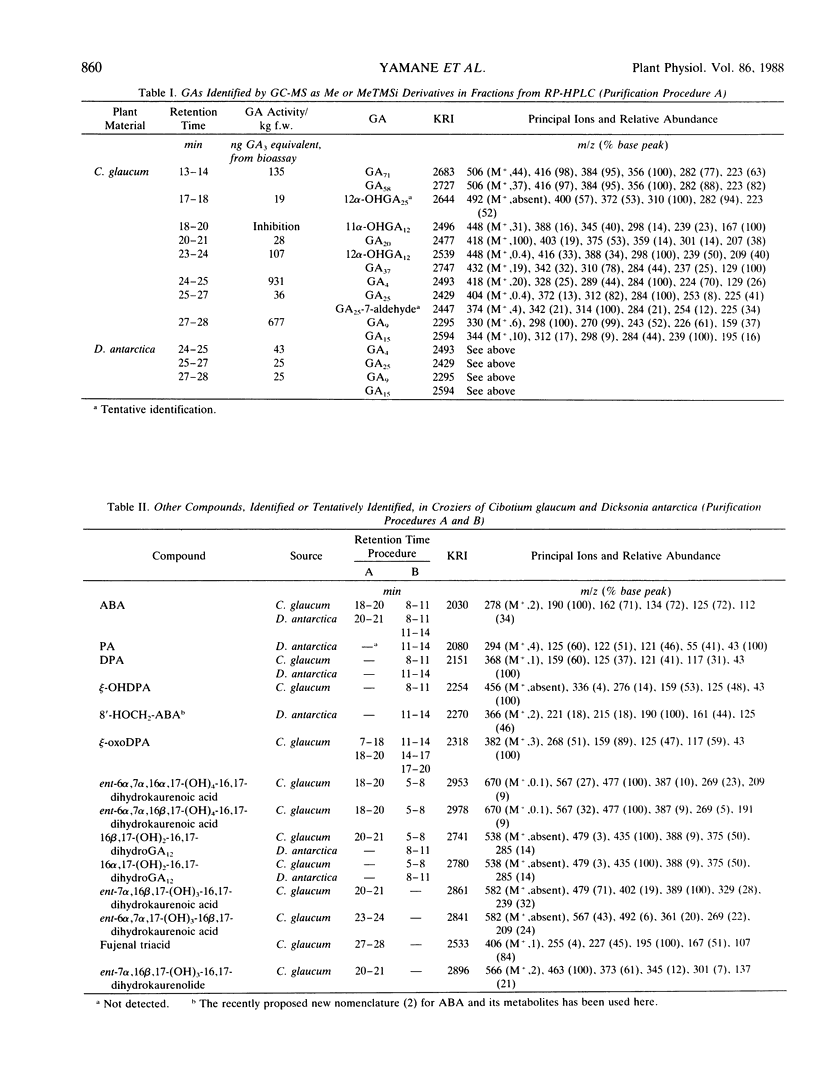
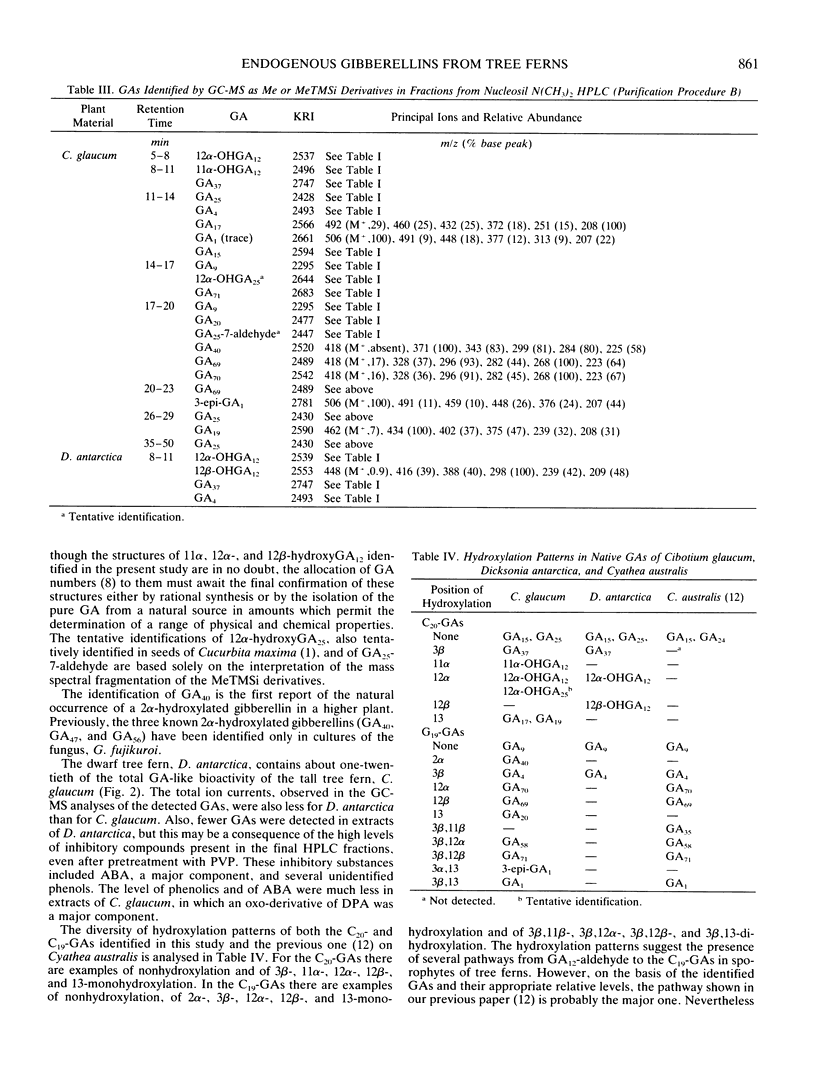
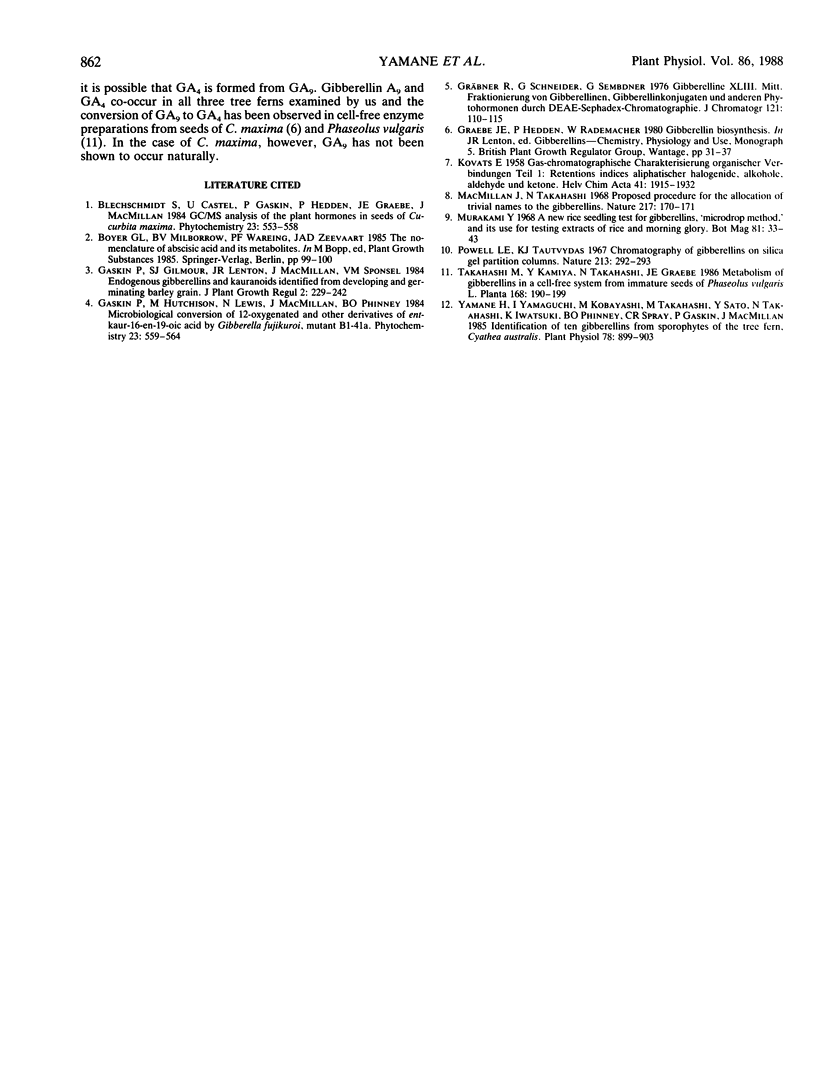
Selected References
These references are in PubMed. This may not be the complete list of references from this article.
- Gadzhiev B. O., Sergeev A. S., Movsum-zade K. M. Assotsiatsiia mutantnykh allelei syvorotochnoi kholinésterazy s nekotorymi mul'tifaktorial'nymi i infektsionnymi zabolevaniiami. Genetika. 1987 Mar;23(3):559–564. [PubMed] [Google Scholar]
- Gräbner R., Schneider G., Sembdner G. Gibberelline. XLIII. Mitt. Fraktionierung von Gibberellinen, Gibberellinkonjugaten und anderen Phytohormonen durch DEAE-Sephadex-Chromatographie. J Chromatogr. 1976 Jun 9;121(1):110–115. doi: 10.1016/s0021-9673(00)82310-9. [DOI] [PubMed] [Google Scholar]
- MacMillan J., Takahashi N. Proposed procedure for the allocation of trivial names to the gibberellins. Nature. 1968 Jan 13;217(5124):170–171. doi: 10.1038/217170a0. [DOI] [PubMed] [Google Scholar]
- Yamane H., Yamaguchi I., Kobayashi M., Takahashi M., Sato Y., Takahashi N., Iwatsuki K., Phinney B. O., Spray C. R., Gaskin P. Identification of Ten Gibberellins from Sporophytes of the Tree fern, Cyathea australis. Plant Physiol. 1985 Aug;78(4):899–903. doi: 10.1104/pp.78.4.899. [DOI] [PMC free article] [PubMed] [Google Scholar]


